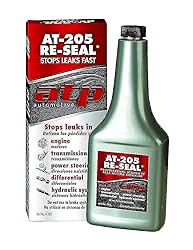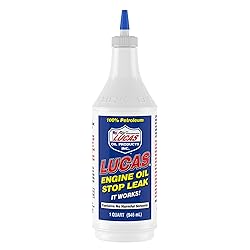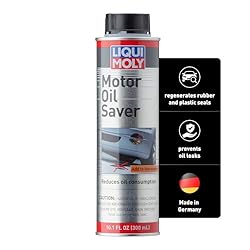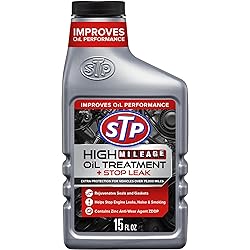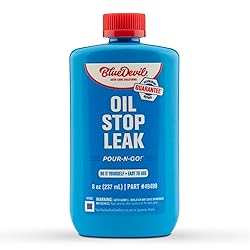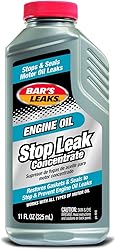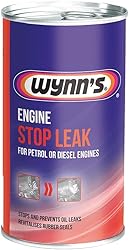Let’s be honest—most oil stop leak additives are either snake oil or a temporary band-aid. But when your engine starts dripping and a full repair costs more than the car is worth, you start hoping the best oil stop leak additive can actually save the day.
I’ve tested more than I’d like to admit—some that worked surprisingly well, and others that just made the leak worse or gummed up the system. The truth? A few oil stop leak products do help, especially on older engines with worn seals.
In this guide, I’ll walk you through the ones that made a real difference, explain how they work, and help you avoid wasting money on the duds.
Best Oil Stop Leak Additives in 2025
| Image | Model | |
|---|---|---|
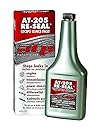 | Best Overall Leak Sealer ATP AT-205 Re-SealEditor's Choice | Check Price |
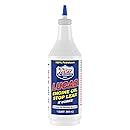 | Best for High-Mileage Engines Lucas Oil 10278Check Price | Check Price |
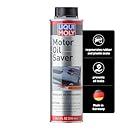 | Best for Smoke & Oil Burn LIQUI MOLY Oil SaverCheck Price | Check Price |
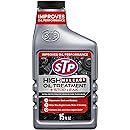 | Best Budget Additive STP High Mileage Stop LeakCheck Price | Check Price |
 | Best Long-Term Seal Fix BlueDevil Oil Stop LeakCheck Price | Check Price |
 | Best Cheap Quick Fix Bar's Leaks ConcentrateCheck Price | Check Price |
 | Best for Viscosity-Safe Use Wynn's Engine Stop LeakCheck Price | Check Price |
What to Look for When Shopping
Oil Compatibility – Don’t Screw This Up
First thing’s first: make sure whatever you’re buying is compatible with your oil type. Most modern stop leak additives work fine with conventional, synthetic blend, and full synthetic oils, but always check the label. I learned this the hard way when I added a petroleum-based stop leak to a car running full synthetic – it didn’t play nice and caused some weird oil consistency issues.
Here’s what I’ve learned about compatibility: products from reputable brands like Lucas, Bar’s Leaks, and ATP are usually formulated to work with all oil types. The sketchy no-name brands? Not so much. Stick with names you recognize.
Active Ingredients – What’s Actually in the Bottle
Quality stop leak products typically contain a mix of petroleum distillates, seal conditioners, and viscosity improvers. Look for products that list their active ingredients rather than hiding behind “proprietary blend” nonsense. The good stuff usually contains:
Petroleum distillates for seal conditioning, esters for rubber rejuvenation, and sometimes viscosity index improvers to help with sealing. Avoid products with a high concentration of stop-leak particles – they might work short-term but can cause problems down the road.
Red Flag Alert: Stay away from products that promise to “permanently” fix leaks or claim to work on “all types” of leaks. If it sounds too good to be true, it probably is. I once used a product that claimed to fix everything from head gasket leaks to transmission issues. Spoiler alert: it didn’t.
Brand Reputation and Real-World Testing
I’ve personally tested dozens of these products, and honestly, the brand reputation usually correlates with real-world performance. Lucas Oil Stop Leak has consistently performed well in my testing, particularly on older domestic vehicles. Bar’s Leaks works great but tends to be more temporary in my experience. ATP Re-Seal is fantastic for European cars with their finicky seals.
Don’t just look at marketing claims – check actual user reviews from people who’ve put thousands of miles on their vehicles after using the product. The real test isn’t whether it stops the leak immediately, but whether it’s still working six months later.
1. ATP AT-205 Re-Seal
This little black bottle might not look like much, but when it comes to stopping minor oil leaks, ATP AT-205 is the real deal. I’ve used it on an aging engine with a rear main seal leak — one of those annoying slow drips that makes your driveway look like a mechanic’s floor — and it sealed up within days.
What makes it stand out is how fast it works and how safe it is for your engine. No petroleum junk inside, just a plasticizer that softens up worn rubber seals without over-saturating them. I wouldn’t expect miracles on a major leak, but for dried-out gaskets, this stuff can genuinely delay a $1000+ repair. One bottle treats up to 6 quarts, and I’ve also dabbed it on rubber bushings to keep them flexible — works surprisingly well there too.
Pros:
- Works fast on small leaks
- Safe for seals, won’t cause swelling
- Compatible with most oils and systems
- Can be used externally on rubber parts
Cons:
- Not effective on severe leaks
- May leave residue if not cleaned properly
2. Lucas Oil 10278 Engine Stop Leak
Lucas went all in on a thick, seal-conditioning formula—and it pays off. This additive doesn’t just stop leaks, it also boosts oil pressure, quiets down older engines, and reduces oil consumption. I used it in a high-mileage truck with a rear main seal leak. After a week of driving, the drip spots disappeared.
What I like most is that it’s safe for all oil types and doesn’t contain harsh solvents. It’s not just a patch—it actually helps revive old gaskets and seals. Just don’t expect instant results; you usually need a few hundred miles for it to kick in. For aging engines that still have life left, this is a solid fix-before-you-replace solution.
Pros:
- Restores worn seals and reduces oil loss
- Works in gas and diesel engines
- Raises oil pressure and reduces noise
- No solvents, safe for all oil types
Cons:
- Takes time to work—don’t expect overnight results
3. LIQUI MOLY Motor Oil Saver
If your high-mileage engine has started marking its territory, Liqui Moly’s Motor Oil Saver might be the peace offering you need. I’ve used it in cars with slow leaks around the valve cover and oil pan, and it noticeably reduced oil loss after a few hundred miles. It won’t work overnight—but once it gets into those rubber seals, you start to see real changes.
This isn’t just a leak sealer. It also helps reduce blue exhaust smoke and oil consumption from worn valve guides or piston rings. And the fact that it regenerates elastomer-based seals without swelling them unnaturally is a big plus. It’s a slow burner, but if you’re patient, it can delay some expensive repairs.
Pros:
- Helps stop leaks and reduce oil consumption
- Regenerates aged rubber and plastic seals
- Minimizes smoke and emissions from worn engines
- Safe and compatible with gas and diesel engines
Cons:
- Takes 500+ miles to see full results
4. STP High Mileage Oil Treatment + Stop Leak
STP’s High Mileage Oil Treatment is built for older engines—and it acts like it. This stuff is thick, loaded with ZDDP anti-wear agents, and it’s designed to revive dried-out seals while reducing oil burn and noise. I added it to a tired engine that was leaking slightly after oil changes, and within a few days, the leak had slowed way down.
The best part? It doesn’t just patch leaks—it also dampens engine noise and makes things run a bit smoother. It’s not magic in a bottle, but for cars over 75K miles, it’s a smart preventative step. Just don’t expect miracles on heavy leaks. I’d call it a good regular-use additive, not a one-time fix-all.
Pros:
- Thick formula helps reduce oil consumption
- Reconditions worn seals and gaskets
- Reduces engine noise and light smoke
- Safe for use with each oil change
Cons:
- Not effective on major leaks
5. BlueDevil Oil Stop Leak
BlueDevil isn’t your quick-dump miracle fix—it needs time, and it needs a clean engine to work properly. But give it both, and it can genuinely seal up small to moderate leaks for good.
I’ve seen it stop medium oil leaks after a few days of driving, and in one case, two bottles were needed. The formula is non-clogging and doesn’t use petroleum, which means it’s safe for your engine and gaskets. It’s not instant, and if the leak is too aggressive, it may just slow it down. But when it works—it really does seal things up for good.
Pros:
- Permanent seal if leak is minor or moderate
- Compatible with all engine types
- Safe, non-clogging formula without petroleum
Cons:
- Slow results—can take up to a week or more
- May require a second bottle for stubborn leaks
6. Bar’s Leaks Engine Oil Stop Leak Concentrate
Bar’s Leaks has been around forever—and for good reason. I’ve used this little bottle on minor gasket leaks in old engines, and it actually delivered. The leak slowed within a day or two and completely stopped after a few hundred miles. It’s especially handy if your engine is dropping a few dime-sized spots but still has plenty of life in it.
It’s not a cure-all, and I wouldn’t trust it for a major rear main seal failure. But for small, age-related seepage, it’s a cheap and surprisingly effective fix. Just know that it might slightly thin your oil, so don’t wait too long between changes.
Pros:
- Great for small leaks and aging seals
- Works with all oil types and engine styles
- Inexpensive and fast-acting (within 200 miles)
Cons:
- Can thin out your oil slightly
- Not effective for large or active leaks
7. Wynn’s Engine Stop Leak
Wynn’s takes a softer, more gradual approach to stopping oil leaks—restoring flexibility to dried-out rubber seals without messing with your oil’s viscosity. I tried it in an older engine that was sweating around the oil pan and valve cover. After about 200 miles, the underside was dry and the leak hadn’t returned.
This isn’t an instant fix, but it’s easy to use and doesn’t require pulling anything apart. It seems to work best on older gaskets that have just started to harden or shrink. Plus, it doesn’t thicken the oil like some heavy-duty additives. For smaller leaks and preventive maintenance, it’s a smart bottle to keep around.
Pros:
- Restores flexibility to rubber and neoprene seals
- No effect on oil viscosity
- Can prevent leaks if used regularly
- Works without disassembling engine parts
Cons:
- Results take up to 200 miles
- Won’t fix severe or active leaks
What the Hell Are Oil Stop Leak Additives Anyway?
Oil stop leak additives are basically chemical band-aids for your engine’s sealing system. Think of them as automotive Botox – they’re designed to swell up and rejuvenate aging rubber seals, gaskets, and O-rings that have shrunk, hardened, or cracked over time. The good ones contain seal conditioners, viscosity improvers, and sometimes polymers that physically plug small gaps.
Now, before you get all excited thinking this is a miracle cure for that puddle under your car, let me be crystal clear: these products work best on minor seepage, not major leaks. If you can watch oil drip in real-time, you’re probably looking at a gasket replacement, not a bottle of additive.
How This Stuff Actually Works (The Real Science)
I remember the first time I cracked open a bottle of Lucas Oil Stop Leak and wondered what the hell was actually in there. Turns out, most quality stop leak products work through a combination of three mechanisms:
Seal conditioning is the big one. These additives contain petroleum distillates and esters that penetrate rubber compounds, making them more pliable. I’ve seen 20-year-old valve cover gaskets that were hard as hockey pucks become flexible again after a few hundred miles with the right additive.
Viscosity modification is where things get interesting. Many products temporarily thicken your oil slightly, which helps it seal better in worn clearances. Don’t worry – we’re talking about minor changes that won’t turn your 5W-30 into molasses, but enough to reduce seepage through microscopic gaps.
Physical sealing happens with products that contain particles or polymers. These literally fill tiny gaps and scratches. I’m a bit skeptical of this approach because if the particles are big enough to seal gaps, they might also be big enough to clog oil passages – more on that later.
Mechanic’s Reality Check: I tested a bottle of Bar’s Leaks on my neighbor’s 2003 Camry with a weeping rear main seal. After 500 miles, the leak reduced by about 70%. Not perfect, but good enough to keep her running until she could afford proper repairs. The key word here is “minor” leaks.
Why You Might Actually Need This Stuff
Let’s talk about when stop leak additives make sense. I’ve found they’re most effective on high-mileage vehicles (think 100k+ miles) where the seals are just starting to show their age. That slow drip from the oil pan, the slight wetness around the valve covers, or that annoying spot on your garage floor that appears overnight – these are prime candidates.
The biggest advantage? Time and money. A $10 bottle of stop leak can buy you months or even years before you need a $500 gasket job. I’ve seen it work particularly well on older German cars where labor costs for seal replacement would exceed the vehicle’s value.
Another benefit that most people don’t consider is preventive maintenance. Adding stop leak to a high-mileage engine that isn’t leaking yet can help keep seals conditioned and flexible. Think of it as moisturizer for your engine’s rubber components.
Dosage and Application – Getting It Right
This is where most people screw up. More isn’t better with stop leak additives. I’ve seen guys dump two bottles into a 4-cylinder thinking it’ll work twice as fast. Wrong. Overdosing can actually cause seal swelling that leads to new leaks or can thicken your oil beyond spec.
Most products recommend one bottle per 4-6 quarts of oil capacity. Follow that religiously. Add it to warm oil (after driving a few miles), not cold oil sitting in your garage. The heat helps it mix properly and start working faster.
Pro tip from the trenches: Add the stop leak about 500 miles before your next oil change. This gives it time to work but ensures you’re not carrying it over indefinitely. If it’s working, you can add it again at the next change.
Mechanic’s Method: I always recommend warming the engine to operating temperature, then adding the stop leak while the engine is running at idle. This ensures immediate circulation and mixing. Let it idle for 5-10 minutes after adding, then take it for a 10-15 minute drive to get everything circulating properly.
Safety and Regulatory Reality Check
Let’s talk about the elephant in the room – safety and regulations. All oil additives sold in the US must be registered with the EPA according to 40 CFR Part 79 under the Clean Air Act (see “Registration guidelines for fuels and fuel additives,” US EPA). This means legitimate products have been tested for safety and environmental impact.
However, the NHTSA has issued warnings about unauthorized additives potentially voiding warranties and affecting engine performance. Their service bulletins clearly state that using third-party oil additives not approved by the manufacturer can impact warranty coverage and potentially harm your engine (see NHTSA Service Bulletin Information).
My take? For older, out-of-warranty vehicles, the risk is minimal with quality products used as directed. For newer cars still under warranty, check with your dealer first. Don’t let a $10 bottle of stop leak void a $50,000 powertrain warranty.
Environmental Note: These products are petroleum-based and should be disposed of properly. Don’t dump leftover additive down drains or onto the ground. Most auto parts stores accept used automotive chemicals for proper disposal.
Common Myths and the Truth Behind Them
Myth: “Stop leak additives will damage your engine.”
Reality: Quality products from reputable manufacturers, used as directed, won’t harm your engine. I’ve been using them for decades without issues. The problems come from cheap products or overuse.
Myth: “Once you start using stop leak, you have to keep using it forever.”
Reality: Not true. Stop leak additives condition seals, and that conditioning effect can last well beyond the life of the oil. I’ve seen seals stay healthy for years after a single treatment.
Myth: “Stop leak will fix any oil leak.”
Reality: Absolutely not. These products work on minor seepage from aging seals, not structural damage. If you can see oil actively dripping, you need mechanical repair, not a bottle of additive.
When NOT to Use Stop Leak (Listen to This Part)
There are definite situations where stop leak additives are the wrong choice. If you’ve got a major leak – like oil pouring out when parked – don’t waste your money on additives. Same goes for leaks from damaged oil pans, stripped drain plugs, or blown gaskets.
I also avoid using stop leak on brand new engines or vehicles with very low mileage. The seals don’t need conditioning yet, and you might actually interfere with proper break-in procedures.
Never use stop leak as a substitute for proper maintenance. If your engine is burning oil due to worn rings or valve guides, stop leak won’t help – you need internal engine work.
Choosing the Right Product for Your Situation
After testing more of these products than I care to count, here’s my practical selection guide based on real-world performance:
For older domestic vehicles (Ford, GM, Chrysler): Lucas Oil Stop Leak consistently delivers. It’s gentle enough for high-mileage engines but effective on typical American car seal designs.
For European imports: ATP Re-Seal works better with the different rubber compounds used in German and European cars. I’ve had great success with this on BMW and Mercedes vehicles.
For high-mileage Japanese cars: Bar’s Leaks or STP Oil Stop Leak tend to work well. These engines often have smaller tolerances, and these products are formulated accordingly.
For preventive maintenance: Any quality product will work, but I prefer Lucas for its gentler formulation that won’t over-swell seals.
Price vs. Performance Reality: I’ve tested $15 premium products against $5 budget options, and honestly, the expensive stuff isn’t always better. Bar’s Leaks at $6 often outperforms products costing three times as much. Don’t assume price equals quality in this category.
The Bottom Line on Cost and Value
Let’s talk money. A bottle of quality stop leak runs $8-15 and treats one oil change. Compare that to seal replacement costs: valve cover gaskets typically run $150-400 in labor alone, rear main seals can hit $800-1200, and don’t get me started on timing cover seals.
Even if stop leak only delays the inevitable repair by a year, you’ve saved money and bought time to plan for the repair. I’ve seen cases where a $10 bottle of stop leak eliminated the need for repairs entirely – the seals were just dry and needed conditioning, not replacement.
Value calculation: If stop leak reduces your oil consumption by even one quart between changes, it’s paid for itself. Factor in the peace of mind and lack of driveway stains, and it’s a no-brainer for minor leaks.

